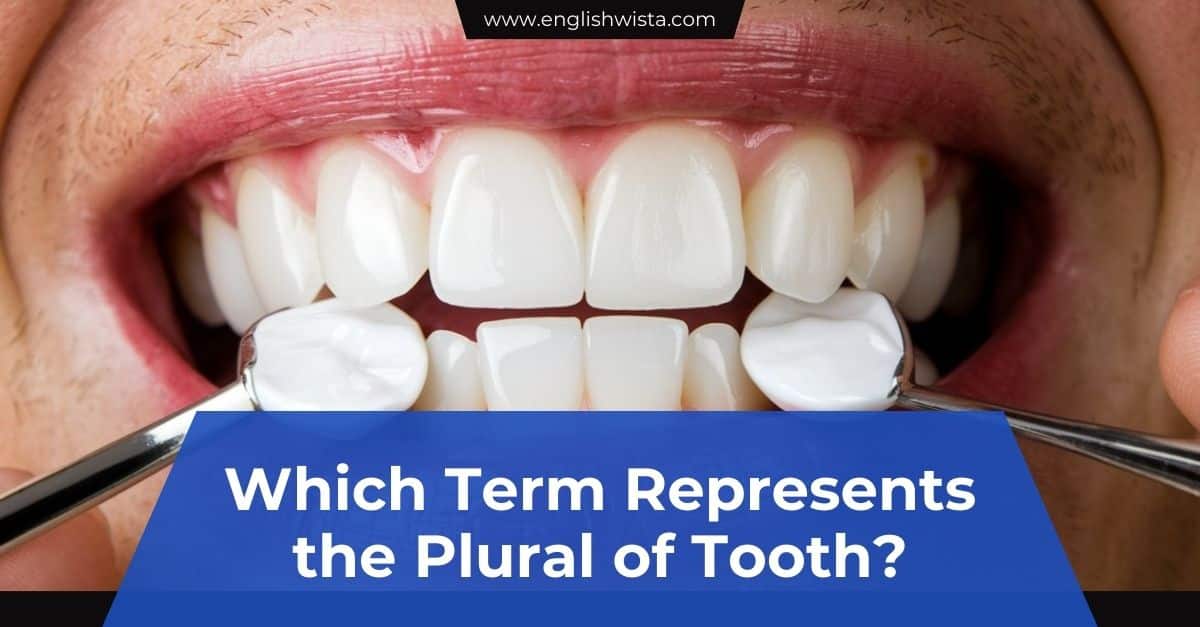Did you know the plural of tooth isn’t as simple as adding an “s”? It’s a curious exception in English that often leaves people scratching their heads. You’ve probably wondered why we say teeth instead of tooths, and trust me, the answer is just as fascinating as the question itself!
If you’re ready to uncover the quirky history and grammar rules behind this oddity, you’re in the right place. By the end of this article, you’ll not only master this tricky plural but also impress your friends with fun linguistic facts. Let’s dive in!
What is the Plural of Tooth?
The plural of “tooth” is “teeth.” It’s as simple as that! When you’re talking about one tooth, you use the singular form: “tooth.” But when you’re referring to more than one, you switch to “teeth.”
For example:
- Singular: I have a loose tooth.
- Plural: The dentist said my teeth look healthy.
Easy, right? Well, almost! Let’s explore why the word changes this way and clear up any confusion you might have.
Why Isn’t It ‘Tooths’?
Great question! English is full of unusual rules and exceptions, and the word “tooth” is one of them. To understand why we say “teeth” instead of “tooths,” we need to look back at the history of the English language.
A long time ago, English borrowed many words from older languages like Old English and Germanic languages. Back then, words like “tooth” followed a pattern called a “vowel mutation” or “umlaut.” This means the vowel sound in the middle of the word changed when the word became plural.
So, instead of simply adding an “-s” like we do with many other words (cat -> cats, dog -> dogs), the vowel in “tooth” changed from “oo” to “ee,” giving us “teeth.”
This might sound complicated, but it’s the same reason we say “foot” and “feet” or “goose” and “geese.” These words are part of a small group that still follows this old rule.
Is ‘Teeth’ Singular or Plural?
“Teeth” is always plural. If you’re talking about just one, you have to use “tooth.” Let’s look at a few examples to make this clear:
- Correct: I brushed my tooth carefully.
- Correct: I brushed my teeth carefully.
- Incorrect: I brushed my teeth carefully.
See the difference? When there’s more than one, it’s always “teeth.”
How to Use “Teeth” in Sentences
Now that you know “teeth” is plural, let’s see how to use it in real-life examples. Here are some sentences to help you:
- I lost two teeth when I was seven years old.
- Sharks have rows and rows of sharp teeth.
- It’s important to take care of your teeth by brushing and flossing daily.
Notice how “teeth” fits naturally when you’re talking about more than one. It’s a small detail, but it makes your sentences sound correct and polished.
What About “Tooth’s” and “Teeth’s”?
Here’s where things can get a little tricky. The forms “tooth’s” and “teeth’s” are not plurals. Instead, they show possession (belonging to something).
- “Tooth’s” refers to something belonging to one tooth:
- Example: The dentist examined the tooth’s root.
- “Teeth’s” refers to something belonging to multiple teeth:
- Example: The teeth’s alignment was perfect after braces.
So, if you’re talking about ownership, remember to add the apostrophe and “s.” But for just making something plural, stick to “teeth.”
Fun Facts About Teeth
To keep things interesting, let’s look at some fun and surprising facts about teeth:
- Did you know that teeth are the hardest substance in the human body? Even stronger than bones!
- Unlike bones, teeth can’t heal themselves. That’s why taking care of them is so important.
- Most humans have 32 teeth as adults, but some people have extra teeth called “supernumerary teeth.”
- Sharks lose thousands of teeth in their lifetime, but they grow back quickly—sometimes within days!
Isn’t that fascinating? Teeth are more than just tools for chewing—they have amazing stories to tell.
Common Mistakes to Avoid
Here are a few mistakes people often make when using “tooth” and “teeth”:
- Mixing Singular and Plural Forms: Remember, “tooth” is for one, and “teeth” is for more than one.
- Incorrect: My tooth are hurting.
- Correct: My teeth are hurting.
- Adding an Extra ‘S’: Avoid saying “tooths” or “teeths.”
- Incorrect: I need to clean my tooths.
- Correct: I need to clean my teeth.
- Forgetting Possession: Use “tooth’s” or “teeth’s” only when showing ownership.
- Incorrect: The teeth shape was uneven.
- Correct: The teeth’s shape was uneven.
The Origin of the Word ‘Tooth’
The word “tooth” comes from the Old English word “tōð,” which is related to the German word “Zahn” and the Dutch word “tand.” All these words trace back to an ancient Proto-Indo-European root, “dent-” or “dont-,” which also gave us words like “dentist” and “orthodontist.”
This shared history explains why similar words for “tooth” exist in many European languages. It’s a great reminder of how interconnected languages are!
Quick Recap: What Have We Learned?
- The plural of “tooth” is “teeth.”
- We say “teeth” because of an old vowel-changing rule from earlier forms of English.
- “Teeth” is always plural; use “tooth” for one.
- Avoid common mistakes like “tooths” or mixing up singular and plural forms.
- Words like “tooth’s” and “teeth’s” show possession, not plurality.
Conclusion: Smile With Confidence!
Now you know everything about the plural of “tooth.” It’s “teeth,” plain and simple! This small but important detail can help you communicate more clearly and confidently. Plus, it’s always fun to learn a bit of language history along the way.
So the next time someone asks, “Which term represents the plural of tooth?” you’ll have the perfect answer. Keep smiling, and don’t forget to take care of your teeth—all of them!


